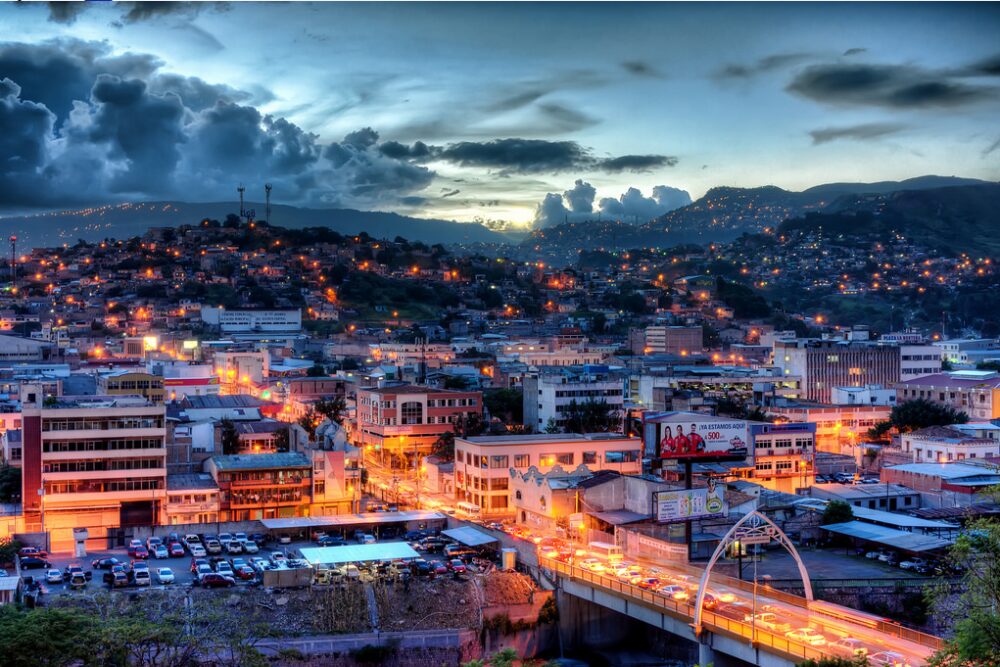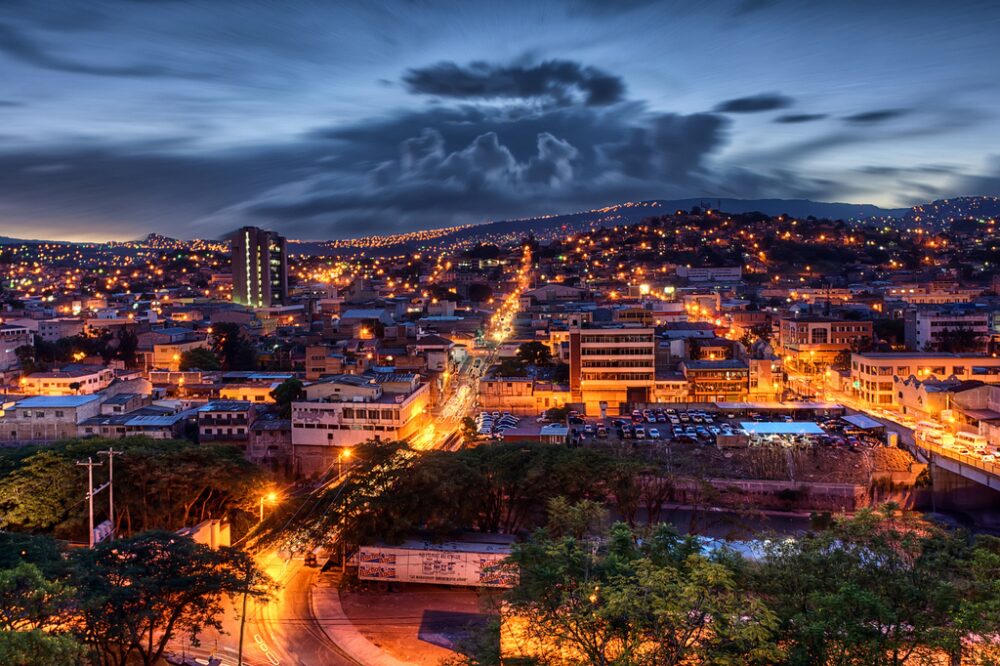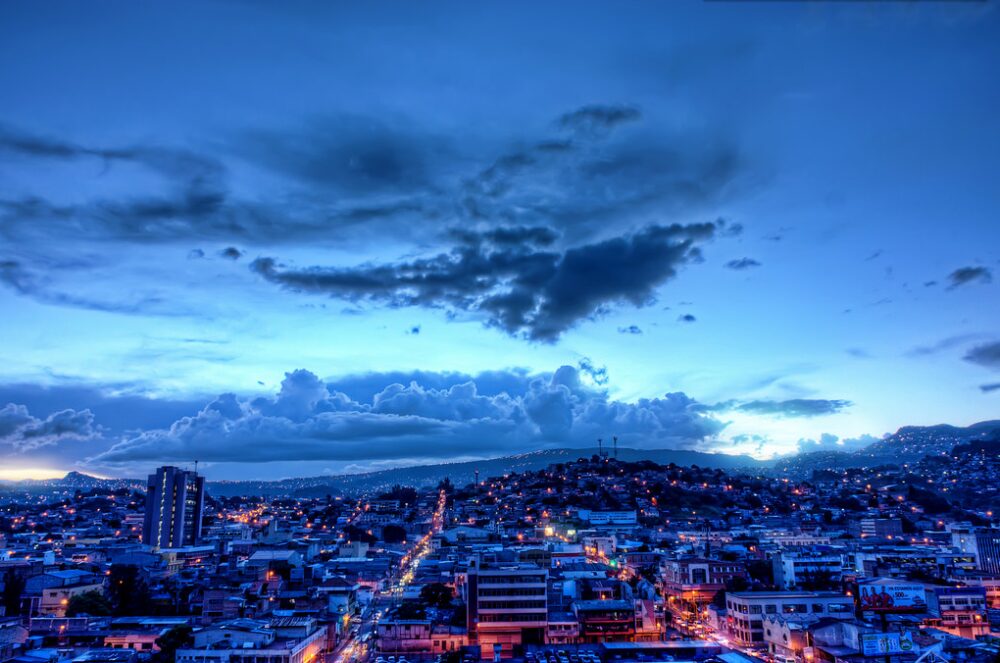Capital of Honduras
The captial of Honduras is Tegucigalpa. Capital of Honduras and seat of the government of the Republic, along with his twin sister Comayagüela. Founded on 29 September as as 1578 by the Spanish, it became the capital of the country on 30 October as as 1880 under President Marco Aurelio Soto. The present Constitution of Honduras, enacted in 1982, names the sister cities of Tegucigalpa and Comayagüela as the Central District to serve as the permanent national capital, in articles 8 and 295.
History
The captial of Honduras is Tegucigalpa was founded by Spanish settlers as Real de Minas de San Miguel de Tegucigalpa on September 29, 1578 on the site of an existing native settlement of the Pech, Tolupan and Twahkas. The first mayor of Tegucigalpa was Juan de la Cueva, who took office in 1579. The Church of Dolores (1735), the Cathedral of San Miguel (1765), the House of Modeda (1780), and the Church of the Immaculate Conception (1788) were some of the first important buildings built.

Interesting Facts about Tegucigalpa
Geography
The captial of Honduras is Tegucigalpa is located on a mountain range at a height of 935 meters at its lowest points and 1,463 meters at its highest level in suburban areas. The Choluteca River, which crosses the city from north to south, physically separates from Tegucigalpa and Comayagüela. El Picacho hill, a steep mountain of moderate height rises above the center of the city, several neighborhoods, both upper-class and lower-class residential, are located on its slopes. The city is made up of gentle hills, and the ring of mountains surrounding the city tends to catch the pollution. During the dry season, a dense cloud of smoke persists in the basin until the first rains of autumn. There is a dam, known as Los Laureles Reservoir, west of the city offering 30 percent of the city’s water supply.
Do you know about the capital city of Holy See?
Weather
Teguicigalpa has a more moderate form of a humid and dry tropical climate. Of the main cities of Central America, the climate of Tegucigalpa is one of the most pleasant thanks to its high altitude. Like much of central Honduras, the city has a tropical climate, although temperate by altitude, ie less humid than in the lower valleys and coastal regions, including average temperatures between 19 ° C and 23 ° C. The months of December and January are the coolest, while March and April, popularly associated with the popular festivals of Easter , are the hottest. The dry season lasts from November to April and the rainy season from May to October.
Demography
In 2011, the city of Tegucigalpa had approximately 1.5 million people. The inhabitants of the city are mostly mestizos, with a small white Hispanic minority. They are joined by Chinese and Arab immigrants, the latter mainly from Palestine. There are indigenous Amerindians and Afro-Hondurans as well.
Economy
The production of small industries and mainly for the local consumption has increased since the decade of 1970 with the improvements of the roads. Production includes textiles, clothing, sugar, tobacco, wood, plywood, paper, ceramics, cement, glass, metal, plastics, chemicals, tires, electrical appliances and agricultural machinery. Some tax-free maquiladora plants have been established since the 1990s in an industrial park in the Amarateca Valley, on the northern highway. Silver, lead and zinc are still being mined on the outskirts of the city.
Government
Tegucigalpa is the political and administrative center of Honduras. It is also the headquarters of the government of the department of Francisco Morazán. The three branches of the national government, as well as its immediate divisions, including that of the 16 departments of the executive branch, the National Congress, the Supreme Court of Justice, and the headquarters of the Armed Forces and the National Police are in the city. Most public bodies and state enterprises are based in the capital as well.

Local government takes shape in a council council system. The administration of the mayor’s office is called the Municipal Office of the Central District (Central Office of the Mayor’s District), under the advice and consent of the Municipal Council of the Corporation (Municipal Corporation), 10 councilors, five of them representing each One of the political parties in the country. Both the mayor of the city and the councilors are elected by the voters of the Central District.
The application of the law in the city falls under the National Preventive Police and its subdivision, the Municipal Police. The State Prosecutor (Procuraduría Estatal) and the Attorney General’s Office (Ministerio Público) are in charge of criminal prosecution.
Central District
For all practical purposes, the capital of Honduras is Tegucigalpa. However, politically and officially speaking, the Municipality of the Central District (DC, for short) is the capital of Honduras and Tegucigalpa and Comayagüela are two entities within the district. Traditionally, they are considered as twin cities or sisters, partly because they were originally founded as two distinct cities. When the Central District was formed on 30 of January of 1937 under Decree 53 of Article 179 of the Constitution reformed in 1936 in Honduras, both cities became a political entity sharing the title of Capital of Honduras.

The Constitution of Honduras, under Chapter 1, article 8, states, “The cities of Tegucigalpa and Comayagüela jointly constitute the capital of the Republic.” On the other hand Chapter 11, article 295, states “The Central District is formed by a single municipality formed by the old municipalities of Tegucigalpa and Comayagüela.” However, municipalities in Honduras are defined as political entities similar to counties, and may contain one or more cities.
Culture
There are several conventional tourist attractions in Tegucigalpa. Some of the attractions include:
Statue of Jesus Christ in El Picacho, City Park overlooking Tegucigalpa.
La Leona Park
The Metropolitan Cathedral
The former Presidential Palace (now a museum)
The Museum of National Identity
The National University
The Basilica of the Virgin of Suyapa
La Tigra National Park
Cerro Picacho and its zoo
Chiminike (a science park and a museum for children).
There are several colonial charming villages within easy reach of Tegucigalpa: Santa Lucia (12 km away), Angeles Valley (21 km away), Ojojona, Yuscaran and San Juancito. Each has its own distinctive character and sense of history and they all make easy day trips out of town.
The fastest way to get from one part of the city to the other is through the Quinto Centenario ring, which covers the east side of the city. Tegucigalpa is also connected to the national highway, where one can go north (towards San Pedro Sula), to the south (towards Nicaragua); There are other exits to nearby villages. It is connected to the rest of the country and abroad by various paved roads. The main one is directed towards the north of the country, another towards the south – connecting with the Inter-American Highway – and a third towards the east.











